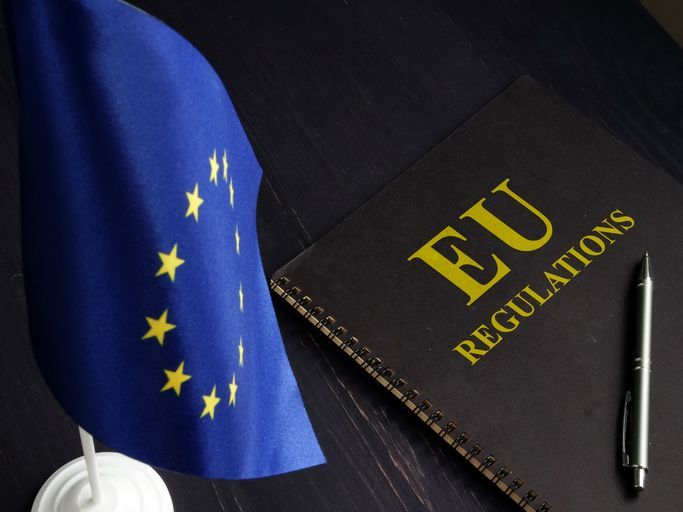SFDR Update for Asset Managers - August 2024
On 25 July 2024, the ESAs published an updated consolidated Q&A on Regulation (EU) 2019/2088 (the “SFDR”) and Commission Delegated Regulation (EU) 2022/1288 (the “SFDR RTS”).

The consolidated Q&A is divided into eight different sections. New questions and answers have been added to section I (Scope issues), section IV (PAI disclosures) and section V (Financial product disclosures).
This document includes a list of all the new questions and answers. To access the full list, please click here: JC 2023 18 - Consolidated JC SFDR QAs (europa.eu)
Section I – Scope issues
Question 4 regarding website
The answer confirms that a financial market participant (e.g. a manager of alternative investment funds (AIFMs) must ensure that publication of SFDR disclosures is made on a website (and if there is no website, then a website should be established).
Permian comment: It is quite common for Nordic AIFMs to publish product level disclosures on a password protected investor portal rather than on a public website. The reason being that all relevant investors will have easy access to the information. It is our view that the new question 4 does not clarify if this is permissible or not.
Question 5 regarding sustainability risks
The answer confirms that if a financial market participant discloses under article 6(1), i.e. deems sustainability risks not to be relevant, such financial market participant must nonetheless comply with other provisions in the AIFMD/AIFMR regarding taking sustainability risks into account when conducting due diligence (article 18(5) of the AIFMR).
Permian comment: Question 5 is applicable to fully authorized managers only and not to registered managers since article 18(5) is not applicable to registered managers.
Section IV – PAI disclosures
Question 26 regarding PAI indicator 4 on fossil fuel
The answer clarifies that PAI indicator 4 in Table 1, Annex 1 of the SFDR RTS should be calculated based on a pass/fail basis. The answer states that this means that “a company is considered to be active in the fossil fuel sector as soon as it derives any revenues from any of the activities mentioned in the definition”.
Permian comment: This is likely to have an impact on many financial market participants since many have applied their own revenue threshold when considering which companies are active in the fossil fuel industry.
Question 27 regarding PAI indicator 6 on energy consumption intensity per high impact climate sector
The answer clarifies that the calculation should be performed so that each high impact sector is aggregated and disclosed separately (i.e. all high impact sectors should not be added together).
Question 28 regarding exchange rates
The answer states that if values need to be converted to EUR, the exchange rate used should be the rate at the end of the fiscal year end.
Question 29 regarding calculating PAI indicator 1 on GHG emissions for fund-of-funds
The answer clarifies that a fund-of-fund should apply a look-through approach to the investee companies causing GHG emissions. The answer states that this means that “the PAI indicator 1 (GHG emissions) is calculated from the underlying investee companies, irrespective of whether the investment in them is direct or indirect (the indirect one would e.g. be an investment through a UCITS).”
Permian comment: The question is mainly relevant for funds investing in other funds.
Section V – Financial product disclosures
Question 20 regarding taxonomy alignment calculations
The answer provides an illustrative example of how to calculate taxonomy alignment.
Permian comment: For those conducting the actual calculations, we recommend a review of the illustrative example.
Question 21 regarding sustainable investments
The answer provides an illustrative example showing how the calculations of sustainable investment can be done either at the economic activity or the investment level. The illustrative example also shows that when assessing good governance, an investee company should meet the criteria in each of the areas of governance and management structures, employee relations, employee remuneration and tax compliance. If the test fails for one of these areas, the investee company should not be assessed as having good governance.
Question 22 regarding sustainable investments made by fund-of-funds
The answer clarifies that a fund-of-fund should use a look though approach when assessing if an investment qualifies as a sustainable investment. The answer also clarifies that: a) if the underlying financial product applies another application of article 2(17) SFDR than the fund-of-fund, the fund-of-fund should use its own application of article 2(17); and b) the fund-of-fund may refer to documentation of the underlying financial product for their application of sustainable investments.
Permian comment: This means that fund-of-fund managers should consider data from underlying assets when assessing if its investments are sustainable investments. This may be challenging since a fund-of-fund manager might not have access to such data. We recommend that a fund-of-fund includes a right in the investor shareholders’ agreement to obtain ESG data from the underlying portfolio companies. We also recommend managers to consider carefully if a fund-of-fund should be marketed as an article 9 or article 8+ fund (i.e. funds making sustainable investments).
Question 23a) regarding financial market participants that delegate management to a third party
The answer clarifies that if management of a fund is delegated, then the delegating financial market participant must ensure that any investments considered sustainable investments conform to the delegating financial market participants’ own application of article 2(17). Otherwise, the investment is not a sustainable investment for the delegating financial market participant.
In addition, the answer affirms that it is the delegating financial market participant offering the financial product that is responsible for compliance with the SFDR, regardless of a delegation arrangement.
Question 23b) regarding passively managed financial products
The answer states that, in case a financial product uses the sustainable investment definition of the index provider it is still the financial market participant that manufactures the financial product that is responsible for compliance with the definition of sustainable investment in the SFDR.
Question 24 regarding UCITS funds and sustainable investments
The answer states that UCITs funds disclosing under article 9 can only use the “remaining portion” of not sustainable investments for hedging and liquidity purposes.
Question 25 regarding financial products passively tracking a Paris Alignment Benchmark (PAB) or Climate Transition Benchmark (CTB)
The answer states that disclosures under the SFDR apply equally also to financial products passively tracking PABs and CTBs.
Question 26 regarding publication of pre-contractual and periodic product templates on website
The answer states that it is the expectation from the ESAs that the template-based pre-contractual and periodic reporting disclosures are published on the website.
Permian comment: It is recommended going forward to publish also the pre-contractual and periodic disclosure annexes on the website. Please refer to Permian comment to question 4 regarding the use of investor portal.
Question 27 regarding application of good governance to real estate investments
The answer states that good governance checks are not necessary for SPVs or holding companies that hold real assets like cars or real estate.
Question 28 regarding PAB and CTB
The answer affirms that a financial product that applies all the requirements applicable to PABs and CTBs can fall within the scope of article 9(3) even if it is not passively tracking a PAB or CTB.
Contact
Anna Berntson Petas: anna.berntson@permian.se











